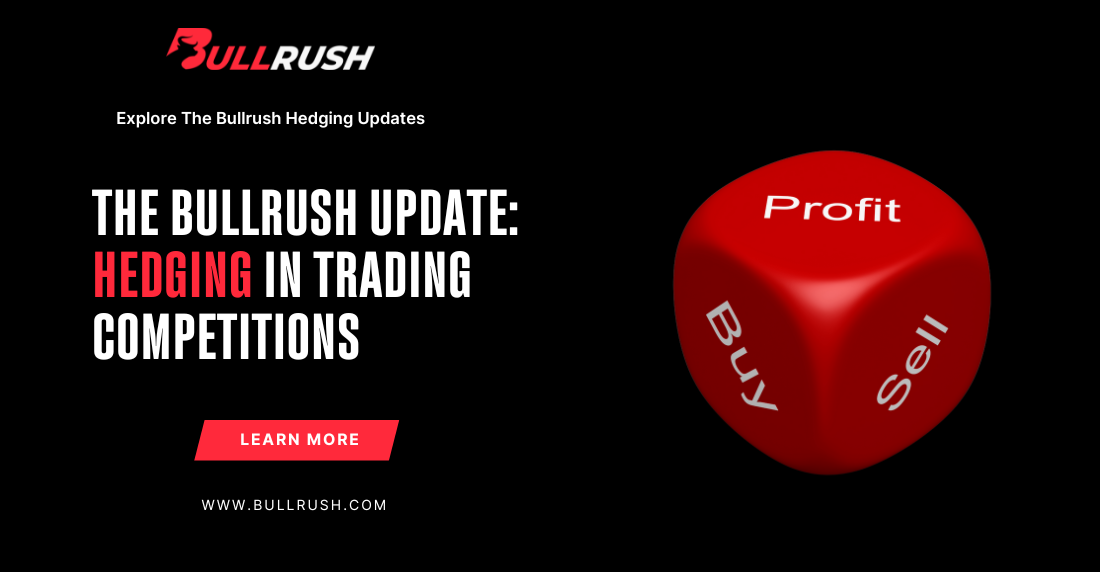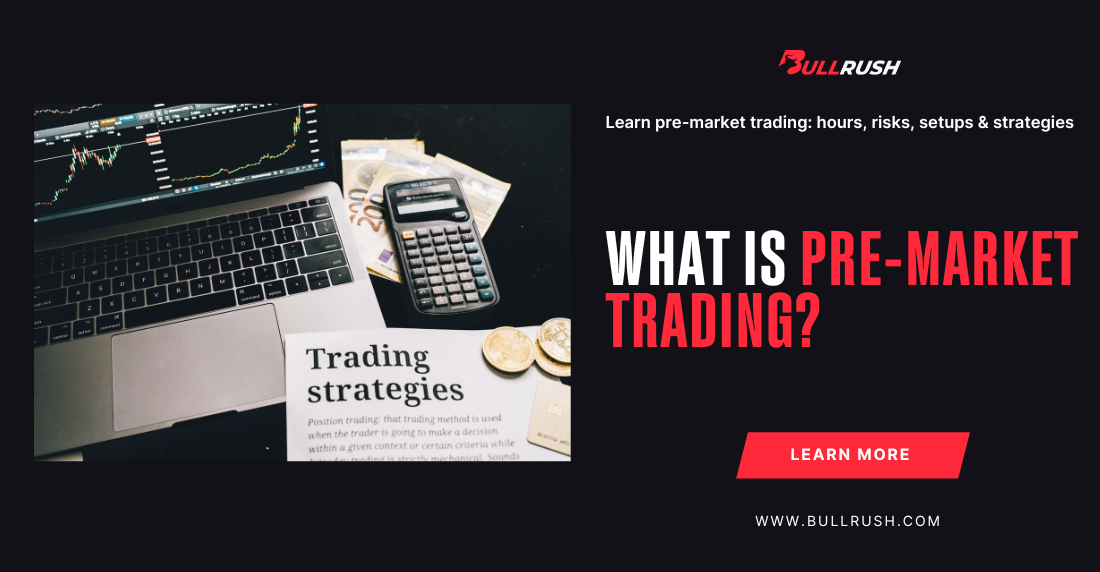
The BullRush Update: Hedging in Trading Competitions
What Is Hedging?
Hedging is a financial strategy devised to offset potential losses in investments through the taking of opposite positions in related assets. In its very core, hedging is a tool of risk management and works like insurance: it doesn’t eliminate risks completely but minimizes the effect of adverse market movements.
Now, let’s dive into how it works, who does it, why it’s important, and what the most common strategies are.
Mastering Hedging: Your Safety Net in Volatility
The hedging strategy means taking several positions that offset each other. For instance, an investor may open two trades on financial instruments with opposite correlation between them. If one moves down, the other might jump up and compensate for that loss.
Hedging finds its wide application in volatile markets, where prices can change very fast and create huge risks. It is especially popular among short-term and medium-term traders, who are more exposed to market fluctuations. Long-term investors often focus on overarching trends and thus hedge less frequently.
Why Do Traders Hedge?
Hedging serves several purposes, including:
- Offset Liquidity Risk: This means that, in the market, one’s fear of liquidity may prevent a trader from buying or selling assets quickly without considerably altering their price.
- Commodity Risks Management: Weather, natural disasters, or resource shortage can disrupt commodity markets. In all these, hedging is beneficial.
- Reducing Currency Risks: Fluctuations in interest rates and foreign exchange markets can affect investments, and therefore hedging is very important to forex traders.
In all these cases, it allows traders to protect their portfolios from unpredictable market events.
Common Hedging Strategies
Hedging strategies differ based on the market and instruments being traded. Following are some of the most widely used methods:
Derivatives Hedging: Derivatives in the form of futures, options, and forward contracts are popular tools for hedging. These contracts let traders lock in future prices or create structured protections against unfavorable market moves.
- Futures and Options: While futures commit both parties to the purchase and sale of an asset at a pre-defined future price, options grant the right but do not impose the obligation. Both tools are widely used to hedge against volatile markets with a view to stabilizing returns.
- Forward Contracts: In many ways, similar to futures, these contracts involve the promise to buy or sell at a fixed price at a predetermined future date and can be tailor-made for specific requirements.
Pairs Trading: Pairs trading is based on a long position in one asset and a corresponding short position in another highly positively correlated asset. For instance, if one stock seems to be undervalued while the other one is overvalued, a trader would buy the undervalued stock and sell the overvalued one. The strategy realizes its profit when the values of these two converge.
Safe Haven Assets: Investors turn to such hedging tools as gold, government bonds, and currencies of countries considered stable as protection in time of crisis.
Advantages and Disadvantages of Hedging
Advantages:
- Limits Losses: Hedging reduces exposure to adverse price movements.
- Portfolio Diversification: Incorporating various asset classes enhances stability.
- Market Protection: Safe haven assets and derivatives provide buffers during uncertainty.
Disadvantages:
- Costs: Hedging often involves fees, premiums, or reduced profits.
- Complexity: Effective hedging requires a deep understanding of markets and instruments.
- Limited Gains: While reducing losses, hedging also caps potential profits.
Hedging in the Forex Market
The Forex market is probably one of the most famous markets to hedge in, owing to the great number of factors that can affect the rates, like interest rates, inflation, and geopolitical events.
The Forex market is huge, presenting more than 330 currency pairs to trade, which makes it the largest and most liquid market in the world. Traders hedge against currency risk simply because one cannot control macro economic events or market fluctuations that may affect the trades.
The BullRush Update: Hedging in Trading Competitions
Hedging has been a popular trading strategy in the Forex market for years involving opening two opposite positions on the same currency pair—such as going long 1 lot of EUR/USD and simultaneously going short 1 lot of EUR/USD. While some traders have leveraged this method for significant gains, it has also led to confusion and concerns in competitive environments like BullRush.
Update on MatchTrader Hedging and Upcoming Changes
As many of you know, there was a strong demand from users to remove the ability for traders to hedge on MatchTrader. Initially, this feature wasn’t available, but after months of collaboration with the MatchTrader team, we were able to implement it. After testing and gathering user feedback, it’s clear that while removing hedging addressed some concerns, it introduced significant challenges—most notably, difficulties in placing Stop Loss (SL) and Take Profit (TP) orders.
Unfortunately, after discussing these issues with MatchTrader, they informed us that there isn’t a reliable way to fully resolve them within the current framework. However, they provided alternative solutions to address the original concerns traders had regarding hedging.
Changes Effective February 1st, 2025
To provide a balanced approach and resolve the SL/TP issues, we will be making the following adjustments:
- Hedging Will Be Re-enabled: Enabling hedging will directly address the issues users experienced with SLs and TPs, restoring the ease of managing these orders.
- New Measures to Control Hedging Risks: To ensure a more controlled environment and mitigate unlimited hedge trading, the following measures will be implemented:
- Maximum Open Exposure Per Symbol: Each symbol will have specific exposure limits. Please refer to our updated FAQ for details on the limits per trading pair.
- Margin Charged on the Larger Side: While MatchTrader does not allow margin to be charged on all hedged trades, we can now charge margin on the larger side of the hedge. For example: If a trader has 1 lot Long EUR/USD and 1 lot Short EUR/USD, the margin requirement will no longer be $0, but will instead apply to 1 lot (the larger side of the trade).
Although these do not completely solve some of the old pain points associated with hedging, we believe these changes would lead to a far superior trading experience for most clients. Our challenge was to provide room for advanced strategy trading yet also make it simple and accessible for most users.
Please do not hesitate to contact us for further clarification, concerns, or comments about the changes above. Your valuable input is our guide toward constant improvement, and we will never settle for less in providing you the best trading experience.
If you haven’t joined our Discord yet, connect with us today!
Together, we’re making BullRush the fairest and most competitive trading platform in the world.



